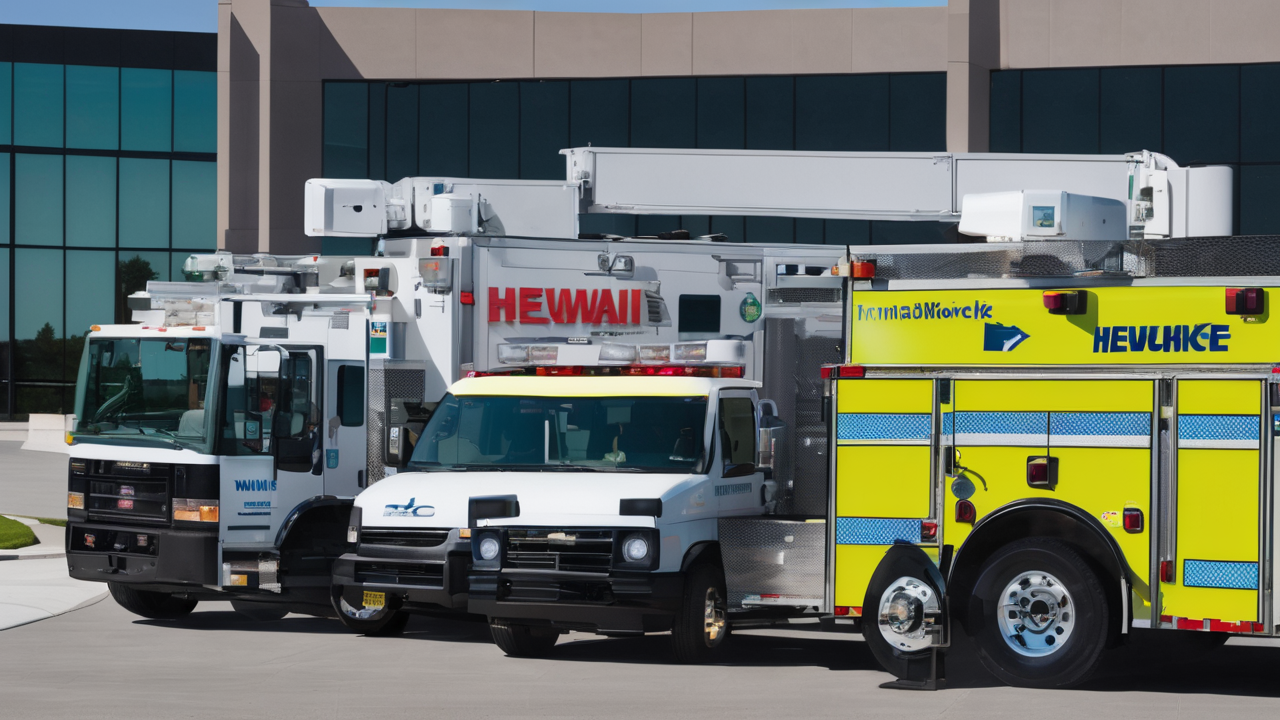Emergence of Nationwide Walkie Talkie Services in the United States
Understanding the Expansion of Nationwide Two-Way Radio Networks
Nationwide walkie talkie services are changing the landscape of wireless communication. These networks offer wide-area coverage, allowing users to communicate across vast distances. Unlike traditional walkie talkies, nationwide services use cellular networks for extended range.

This expansion brings new possibilities for businesses and organizations. Workers can now stay connected across state lines or even the entire country. The technology combines the simplicity of two-way radios with the reach of cellular networks.
Key features of these networks include:
- Coast-to-coast coverage
- Group communication capabilities
- Integration with existing radio systems
- Enhanced security and privacy options
As the demand grows, more providers are entering the market. This competition is driving innovation and improving service quality for users across the United States.
Advantages of Nationwide Walkie Talkie Services for Users
Nationwide walkie talkie services offer numerous benefits to users. These advantages make them attractive for both personal and professional use. Here are some key benefits:
- Instant communication: Users can connect with team members instantly, without dialing.
- Group conversations: Multiple users can join the same channel for team coordination.
- Cost-effective: Often cheaper than traditional cell phone plans for large groups.
- Simple operation: Easy to use, with push-to-talk functionality similar to traditional radios.
- No service limitations: Unlike local radio systems, there are no range restrictions.
These services are particularly useful for businesses with mobile workforces. They allow seamless communication between office staff and field workers. For personal use, they provide a reliable way to stay in touch during outdoor activities or travel.
The Impact on Public Safety and Emergency Responders
Nationwide walkie talkie services are revolutionizing public safety communications. Emergency responders can now coordinate more effectively across jurisdictions. This improved communication is crucial during large-scale disasters or multi-agency operations.
Key benefits for public safety include:
- Interoperability between different agencies
- Real-time information sharing during emergencies
- Enhanced situational awareness for first responders
- Backup communication system during network outages
These services also support community safety initiatives. Neighborhood watch groups and volunteer organizations can use them for better coordination. This technology is bridging gaps in communication, making communities safer and more connected.
Technological Innovations Shaping the Walkie Talkie Industry
Advancements in Battery Life and Durability for Field Workers
Battery life is a critical factor for field workers using two-way radios. Recent advancements have significantly improved power efficiency. New lithium-ion batteries offer longer talk times and standby periods. Some models now boast battery life of up to 24 hours on a single charge.

Durability is another area of innovation. Modern walkie talkies are built to withstand harsh conditions. Features include:
- Water and dust resistance
- Shock-proof casings
- Extreme temperature tolerance
- Anti-corrosion materials
These improvements ensure that devices can operate reliably in challenging environments. From construction sites to emergency situations, users can depend on their radios to perform.
The Integration of GPS and Mapping Technologies
GPS integration is transforming the capabilities of two-way radios. This feature allows organizations to track the location of team members in real-time. It's particularly valuable for managing mobile workforces and ensuring worker safety.
Key benefits of GPS integration include:
- Real-time location tracking of team members
- Geofencing capabilities for improved safety
- Navigation assistance for field workers
- Location-based alerts and notifications
Some advanced systems even offer indoor positioning. This is crucial for firefighters or security personnel working inside buildings. The combination of voice communication and location data enhances operational efficiency and safety.
Software Innovations Enhancing Two-Way Communication
Software advancements are expanding the functionality of two-way radios. Modern devices now offer features previously only available on smartphones. These innovations include:
- Text messaging capabilities
- Voice recording and playback
- Integration with workflow management systems
- Over-the-air programming and updates
Dispatch software has also evolved. It now offers advanced features like call queuing and automated alerts. This improves efficiency for organizations managing large fleets or teams.
Encryption technology has improved security for sensitive communications. Advanced encryption protocols protect against eavesdropping and unauthorized access. This is crucial for law enforcement and businesses handling confidential information.
Market Analysis and Forecast for Nationwide Walkie Talkies
Analyzing the Current Demand for Two-Way Radios
The demand for nationwide walkie talkie services is on the rise. Several factors are driving this growth:

- Increased focus on worker safety in industries like construction and logistics
- Need for reliable communication in areas with poor cell coverage
- Growing awareness of the benefits of push-to-talk technology
- Demand for cost-effective communication solutions for large teams
Key industries adopting this technology include:
- Transportation and logistics
- Construction and field services
- Hospitality and event management
- Public safety and emergency services
The COVID-19 pandemic has also influenced demand. Many organizations are seeking ways to maintain social distancing while ensuring clear communication. Walkie talkies offer a hands-free, instant communication solution that meets these needs.
Predicting the Growth of the Walkie Talkie Market
The walkie talkie market is expected to see steady growth in the coming years. Analysts predict a compound annual growth rate (CAGR) of 8-10% through 2025. This growth is driven by both traditional industries and emerging sectors.
Factors contributing to market growth include:
- Increasing adoption in developing countries
- Technological advancements improving device capabilities
- Growing demand for rugged, reliable communication devices
- Expansion of IoT and connected device ecosystems
The shift towards digital two-way radios is a significant trend. Digital technology offers improved audio quality, better battery life, and enhanced features. This transition is expected to drive market growth as organizations upgrade their systems.
Key Players and Their Market Strategies
The nationwide walkie talkie market is competitive, with several key players vying for market share. Major companies in this space include:
- Motorola Solutions
- Hytera Communications
- JVCKENWOOD Corporation
- Icom Inc.
- L3Harris Technologies
These companies are employing various strategies to maintain their market position:
- Investing in R&D to develop innovative features
- Expanding product lines to cater to different market segments
- Forming partnerships with software companies for improved integration
- Focusing on rugged, durable designs for specific industries
Some players are also exploring new business models. This includes offering walkie talkie services as a subscription-based model. This approach makes the technology more accessible to smaller organizations and individual users.
As the market evolves, we can expect to see more consolidation and partnerships. Companies are likely to combine their strengths to offer comprehensive communication solutions. This trend will shape the future of the nationwide walkie talkie industry in the coming years.


